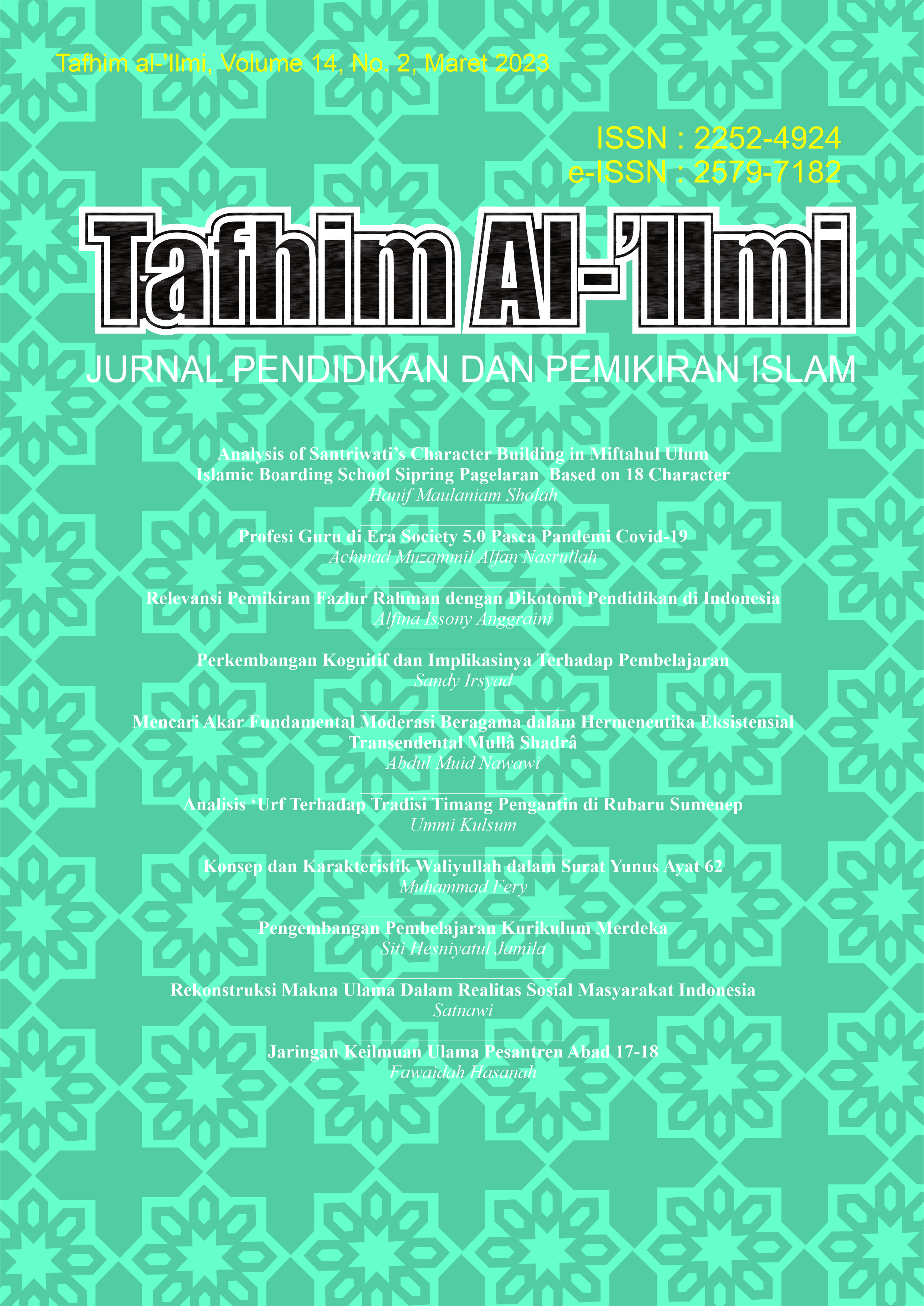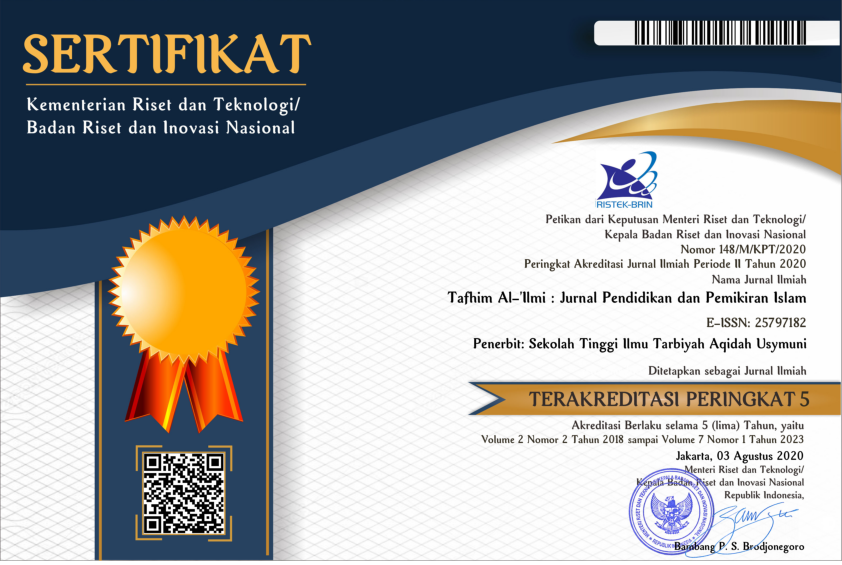Lingkaran Keilmuan Ulama Pesantren Abad 17-18 (Analisis Buku Jaringan Ulama Timur Tengah Dan Kepulauan Nusantara Abad 17-18 Karya Prof. Azyumardi Azra )
DOI:
https://doi.org/10.37459/tafhim.v14i2.6456Abstract
Pesantren is a place where you can continue to seek knowledge. The knowledge in the pesantren is obtained from the ulama or kyai who take care of the pesantren. In terms of science, Pesantren has the most distinctive characteristics that distinguish it from other institutions, namely maintaining the tradition of continuity of scientific sanad. Sanad science is important, because the knowledge gained from this continuity has guaranteed authenticity. In this study, it will be discussed about the form of a network of Indonesian and middle eastern scholars by analyzing a book by prof. Azyumardi Azra with the title network of scholars in the Middle East and archipelago. This research is descriptive, because there is no calculation element and is more concerned with the content. With the following findings, the science of islamic boarding school scholars in the archipelago is centered on a network of scholars in the Middle East. The Nusantara scholars studied in Mecca and Medina or commonly called Haramain. The main purpose of scholars coming to Haramain is to perform the hajj and study, but there are some scholars who study until they settle down and build a place there. In haramain they don't just deal with one cleric. After completing their studies, the scholars returned to their respective homelands with what had been obtained in Haramain. The network of scholars grew as scholars retained their works, and these works were not just for their own enjoyment. However, it spreads senusantara. Keywords: Ulama Network, Scientific SanadDownloads
Published
2023-06-09
How to Cite
Hasanah, F. (2023). Lingkaran Keilmuan Ulama Pesantren Abad 17-18 (Analisis Buku Jaringan Ulama Timur Tengah Dan Kepulauan Nusantara Abad 17-18 Karya Prof. Azyumardi Azra ). Tafhim Al-’Ilmi, 14(2), 310–320. https://doi.org/10.37459/tafhim.v14i2.6456
Issue
Section
Articles
License

This work is licensed under a Creative Commons Attribution-ShareAlike 4.0 International License.
Artikel yang dimuat dalam jurnal ini boleh disebarluaskan, diterbitkan kembali, dengan syarat mencantumkan bahwa artikel tesebut telah dimuat di jurnal Tafhim al-'Ilmi dengan mencantumkan volume, nomor, dan halaman artikel terkait.







